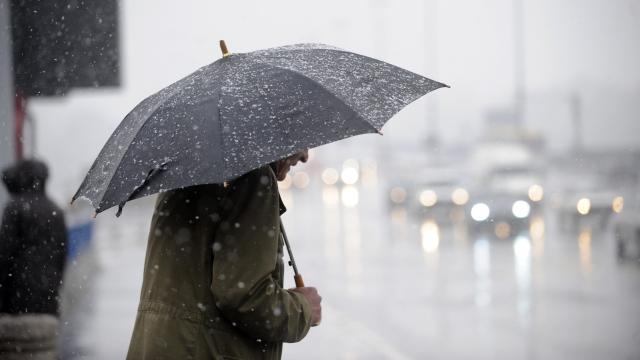No matter how advanced science gets, we’ll always reach a wall on forecasting the weather into the future—and that threshold, on average, is two weeks. That is how long an unaccounted-for event in our environment takes to have a significant impact on the weather. If you’re planning on inviting friends for a picnic or thinking of going on a hike in two weeks, don’t bother looking at whether it’s expected to rain or not: The chances of it changing are very likely. Here’s why.
Why can’t we forecast the weather two weeks ahead?
As you can probably guess, two weeks isn’t some arbitrary number—it’s based on science. Dr Kerry Emanuel, an atmospheric scientist at MIT, found that two weeks is our limit to predict the day-to-day weather, even with the best forecast models in the most desirable conditions.
Falko Judt, a research meteorologist at the National Centre for Atmospheric Research, told Mashable the reason behind this can simply be attributed to chaos. The main reason is that there is no way to know exactly what every atom in space is doing at every given moment, a law called the uncertainty principle. A simple atom is all it takes to kickstart a profound chain reaction in the atmosphere. After all, the last ingredient for a thunderstorm to start is a simple motion in the atmosphere.
How the butterfly effect has an impact on weather forecasting
Climate scientists use sophisticated climate models to forecast what the weather will look like for your birthday weekend. They put in as much data as they can to make these models as close to reality as possible. But there are limits. “We reach a point where there’s nothing that we can do in order to improve the simulations,” said Dr Paul Ullrich, professor of regional and global climate modelling at the University of California, Davis. “Eventually, we just get to the point where we would need to observe basically every single molecule of air in order to do these long-term forecasts. And even then, if we knew where all those molecules were, there are external factors that can grow over time and influence the weather forecast.”
Say there is a hypothetical model that perfectly simulates our reality down to the last atom in a droplet of water in the atmosphere. You run the model to forecast the weather, but moments later, in the real world, a tree falls down that is not accounted for in the model. The more time that passes, the further away the model and the fallen tree reality will be from each other, since the fall will undoubtedly have a ripple effect that will deviate more from the model with time. You might know this as “the butterfly effect”. So the further you look into a forecast on your weather app, the higher the chance it is to be wrong because of the impossibility of accounting for future events.
How accurate are long-term weather forecasts?
Ullrich explains that effects that are essentially unobservable occur at small scales that are essentially impossible to observe and can grow over time to become important for the weather forecast. “It’s a fundamental limitation, both of our observational network and just the inherently chaotic nature of the atmosphere,” Ullrich shared.
This is not to say this two-week average is accurate all around the world. The atmosphere over Florida is way more unpredictable than it is in most parts of California. So a two-week prediction in California will likely be more accurate more often than a two-week prediction in Florida’s more dynamic and less stable tropical weather.
Ullrich explained that the best way to look at forecasts is to determine whether the event is a small or large-scale event. Small-scale events like rain and thunderstorms are the hardest to predict accurately since they can be easily triggered or altered by many environmental factors. Even tropical cyclones, which are bigger-scale events, are hard to predict accurately three to five days out. On the other hand, big-scale events like heat waves or cold snaps are much more accurately predicted 10 days to two weeks out. “They’re coupled with these kinds of global wave patterns that propagate around the earth. And so they occur over very large areas, so being able to get large-scale temperatures correct is pretty easy.”
So, while you might not know if it’ll rain or not on your birthday weekend, looking at bigger-scale events like the temperature, or an impeding hurricane, will give you a more trustworthy forecast.

Leave a Reply
You must be logged in to post a comment.